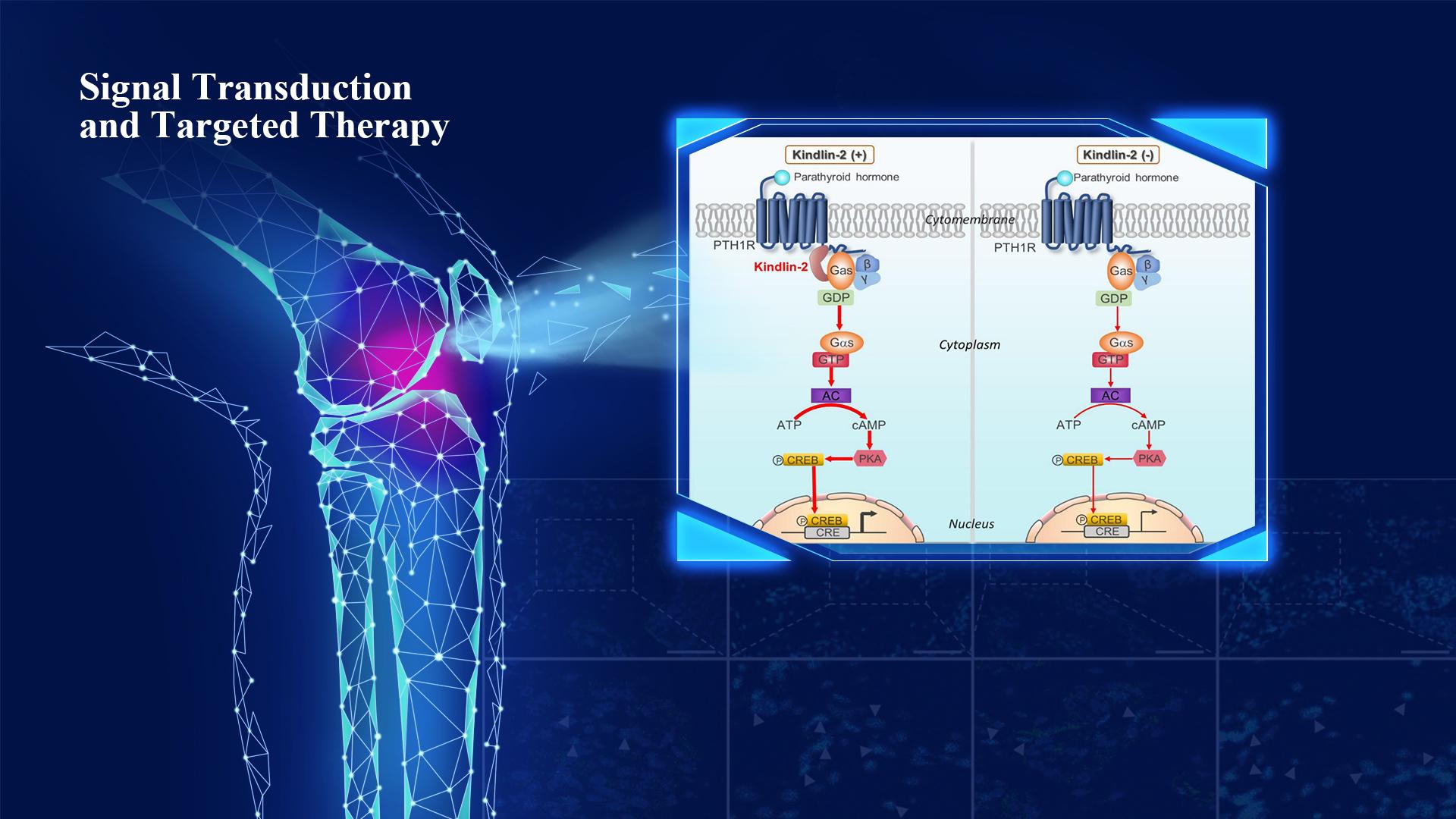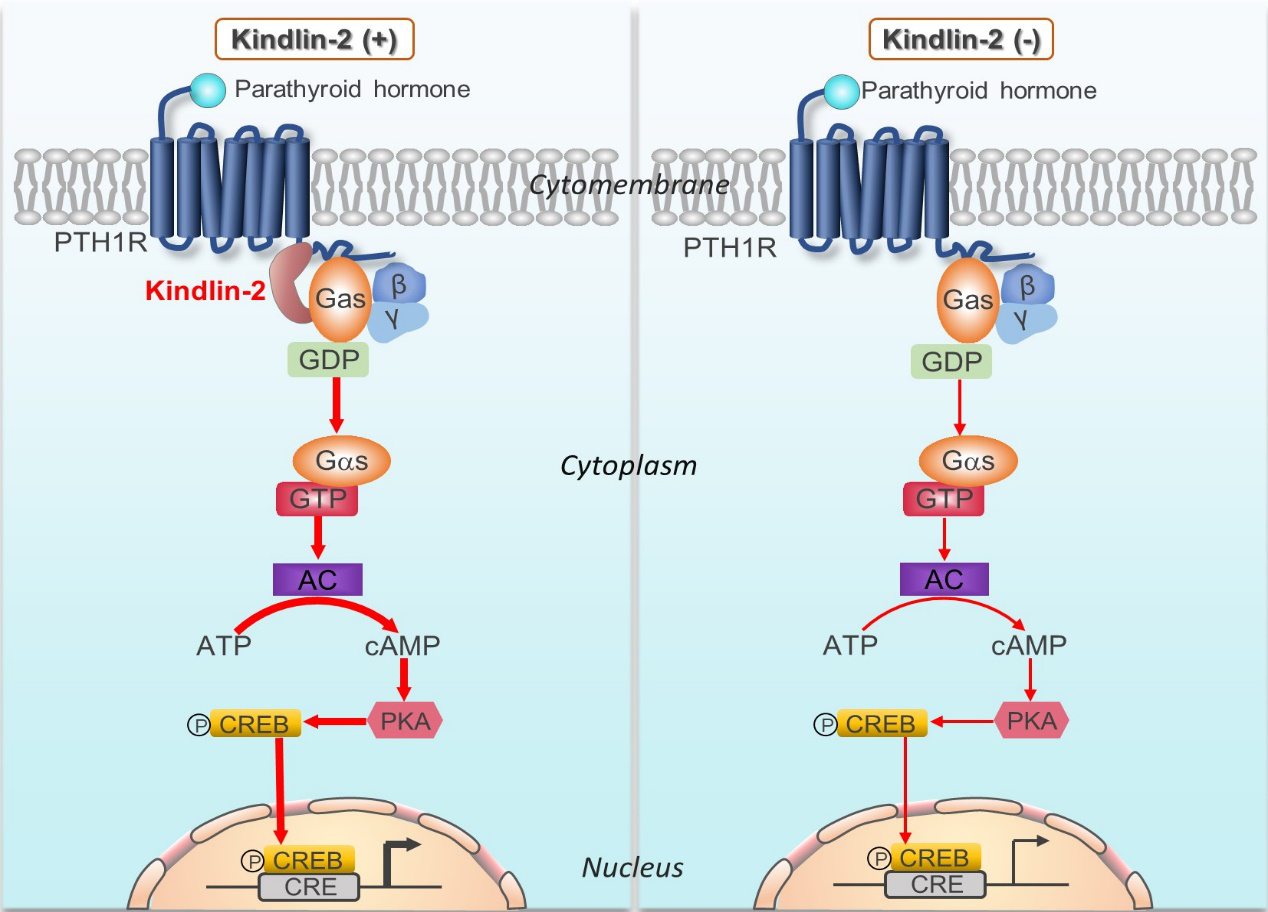On December 26, 2020, the Journal of Signal Transduction and Targeted Therapy (Signal Transduction and Targeted Therapy) published new progress in the field of bone homeostasis by Professor Xiao Guozhi of the School of Medicine at the Southern University of Science and Technology. The study found that focal adhesion protein Kindlin-2 regulates bone formation and bone homeostasis by interacting with type 1 parathyroid hormone receptor (PTH1R), adjusts the basal and intermittent parathyroid hormone (PTH) stimulated bone mass.

PTH1R, as the main functional receptor for PTH and parathyroid hormone-related proteins (PTHrP), plays an important role in human skeletal development, homeostatic regulation, calcium, and phosphorus metabolism, and its abnormal signal can lead to osteoporosis, hypercalcemia, and so on. Intermittent PTH stimulation is an effective treatment for osteoporosis, but its mechanism is not completely clear.
In this study, the team knocked out Kindlin-2 or a single dose of both Kindlin-2 and Pth1r genes in osteocytes at the same time and found that the basal bone mass and parathyroid hormone-stimulated bone mass of mice decreased significantly in both situations. There was no such phenomenon in the mice with a single dose of Kindlin-2 or Pth1r gene knockout. This suggests that Kindlin-2 and PTH1R play a role in the same genetic pathway.

Figure 1. Simultaneous knockout of a single dose of Kindlin-2 and Pth1r genes seriously affected basal and PTH stimulated bone mass.
Mechanism studies have found that Kindlin-2 can bind to the 474th ~475 amino acid residues in the cytoplasmic domain of the PTH1R and Gsα. Knockout of Kindlin-2 in bone and in cultured osteoblasts in vitro suppresses the PTH induced production of cyclic adenosine monophosphate (cAMP) and the phosphorylation of cyclic adenosine reactive element-binding protein (CREB). The study found that PTH can also significantly up-regulate the expression of Kindlin-2 in vitro and in vivo, thus forming a positive feedback regulatory loop. The study also found that estrogen reduction in mice caused by ovariectomy can significantly reduce the expression of Kindlin-2 in osteocytes and thus inhibit intermittent PTH induced bone formation. The above studies have demonstrated that Kindlin-2 functions as an intrinsic component of the PTH1R signaling pathway in osteoblastic cells to regulate bone mass accrual and homeostasis.

Figure 2. Kindlin-2 functions as an intrinsic component of the PTH/PTHrP/PTH1R signaling pathway in osteoblastic cells to regulate bone mass increase and homeostasis.
This study not only theoretically enriches the mechanism of intermittent PTH promoting bone formation but also provides a potential intervention target for the prevention and treatment of osteoporosis.
Senior research scholar Xuekun Fu, SUSTech-Hong Kong University Ph.D. student Bo Zhou and research assistant Qinnan Yan are the co-first authors of the paper, Professor Guozhi Xiao is the corresponding author, Associate Professor Huiling Cao and Professor Ge Zhang of Hong Kong Baptist University are co-correspondents. The research has been supported by the National Natural Science Foundation of China, the Ministry of Science and Technology, the Shenzhen Science and Technology Commission, and SUSTech.
Paper link: https://www.nature.com/articles/s41392-020-00328-y.pdf
Proofread ByAdrian Cremin, Zhong YANG
Photo By